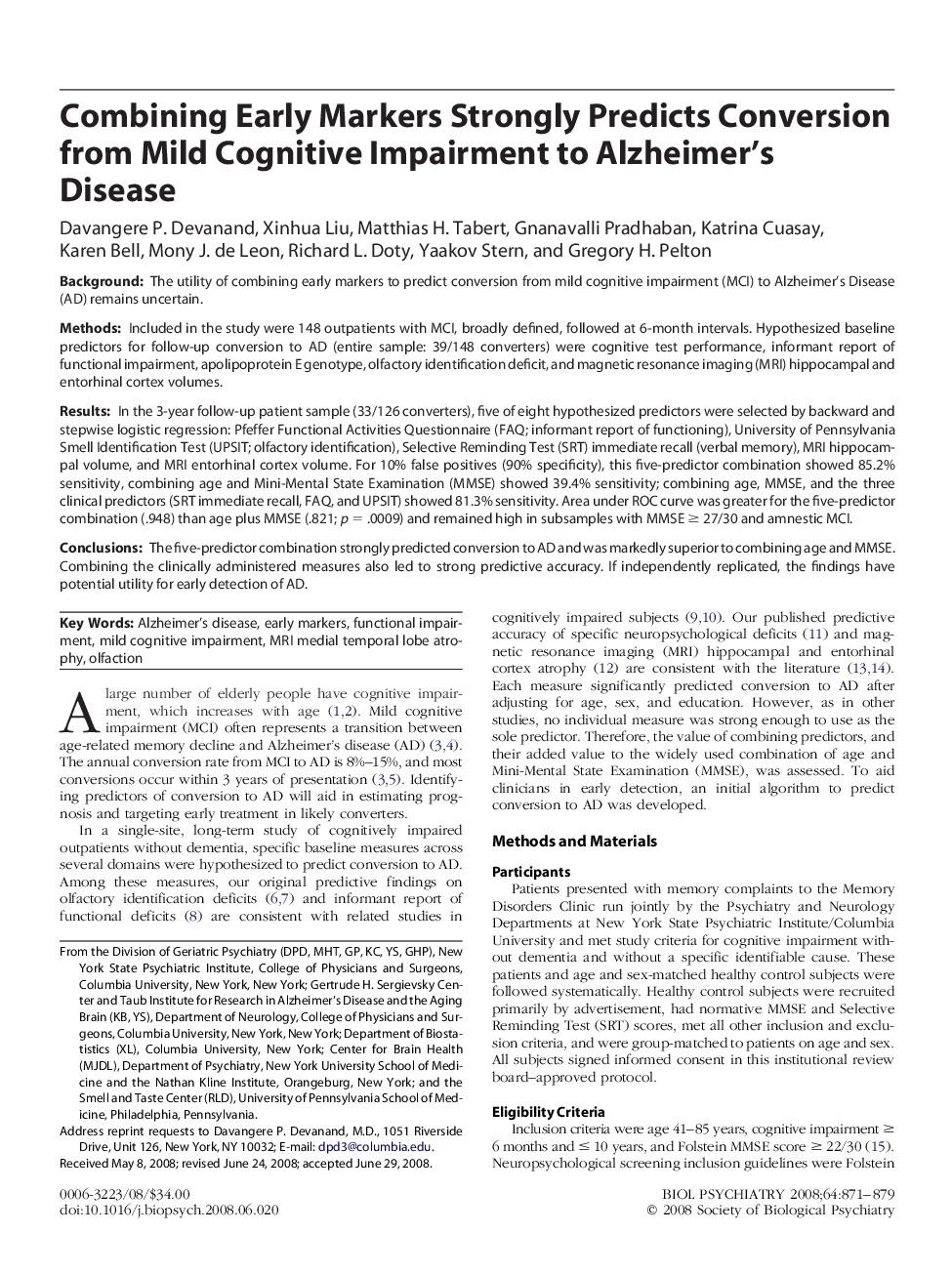| کد مقاله | کد نشریه | سال انتشار | مقاله انگلیسی | نسخه تمام متن |
|---|---|---|---|---|
| 4179436 | 1276549 | 2008 | 9 صفحه PDF | دانلود رایگان |

BackgroundThe utility of combining early markers to predict conversion from mild cognitive impairment (MCI) to Alzheimer's Disease (AD) remains uncertain.MethodsIncluded in the study were 148 outpatients with MCI, broadly defined, followed at 6-month intervals. Hypothesized baseline predictors for follow-up conversion to AD (entire sample: 39/148 converters) were cognitive test performance, informant report of functional impairment, apolipoprotein E genotype, olfactory identification deficit, and magnetic resonance imaging (MRI) hippocampal and entorhinal cortex volumes.ResultsIn the 3-year follow-up patient sample (33/126 converters), five of eight hypothesized predictors were selected by backward and stepwise logistic regression: Pfeffer Functional Activities Questionnaire (FAQ; informant report of functioning), University of Pennsylvania Smell Identification Test (UPSIT; olfactory identification), Selective Reminding Test (SRT) immediate recall (verbal memory), MRI hippocampal volume, and MRI entorhinal cortex volume. For 10% false positives (90% specificity), this five-predictor combination showed 85.2% sensitivity, combining age and Mini-Mental State Examination (MMSE) showed 39.4% sensitivity; combining age, MMSE, and the three clinical predictors (SRT immediate recall, FAQ, and UPSIT) showed 81.3% sensitivity. Area under ROC curve was greater for the five-predictor combination (.948) than age plus MMSE (.821; p = .0009) and remained high in subsamples with MMSE ≥ 27/30 and amnestic MCI.ConclusionsThe five-predictor combination strongly predicted conversion to AD and was markedly superior to combining age and MMSE. Combining the clinically administered measures also led to strong predictive accuracy. If independently replicated, the findings have potential utility for early detection of AD.
Journal: Biological Psychiatry - Volume 64, Issue 10, 15 November 2008, Pages 871–879